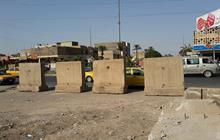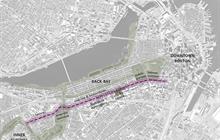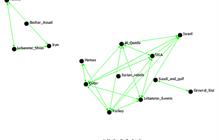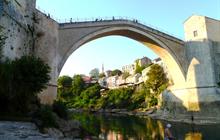
Planning in Baghdad: how conflict shaped the city
After spending over six years conducting research on urban planning in Iraq, Sebastian Schulz and Niran Banna explore how war and terrorism turned a once-cosmopolitan city into a divided metropolis.

After spending over six years conducting research on urban planning in Iraq, Sebastian Schulz and Niran Banna explore how war and terrorism turned a once-cosmopolitan city into a divided metropolis.

Unlike a wound to the body, the marks left behind a wound to a city may be of the city's own designs, in the form of a memorial. A memorial which Sam Valentine argues is now needed to restore dignity to the act of remembrance.

A chart doing the rounds of social media shows what a tangled mess the Middle East is. But if we tease it apart, we see a region neatly divided into two camps; it's just that one is divided amongst itself.

The destruction and reconstruction of Stari Most was one of the most symbolic aspects of the Bosnian War. Yet while it now stands as a symbol of peace and cohesion, it was not always seen as such.
In this extract from their forthcoming book, Rasna Warah and Mohamud Diriye recount the history of Mogadishu from its origins in Arab and Persian trade to the outbreak of civil war in 1991.
Sebastian Schulz holds an MSc in Urban and Regional Planing Management and works as an urban planner and GIS analyst at BUP in Dusseldorf.
Sign up here for email updates
The Global Urbanist is an online magazine reviewing urban affairs and urban development issues in cities throughout the developed and developing world.
Its readers are drawn from the urban policy and international development sectors, and include urban planners, officers in local, national or international government agencies, civil society leaders, and researchers.
